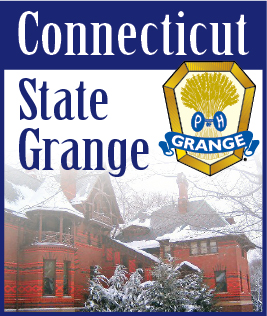| JULY 5, 2012 -- In May Gordon Gibson, Phil Prelli, myself and my husband Bruce traveled to Washington, DC to participate in the National Grange Legislative Fly-In. National Grange had set up a series of speakers on different bills that National Grange is monitoring. We were then briefed by staff of the National Grange on our standings on these bills. National Grange set up appointments with our Senators and Congressional office staff plus we were able to meet with Representative Joe Courtney of the 2nd district to discuss the various bills. We also were treated to a tour of the Capitol building.
National Grange passed out information on US Postal Reform bill recommendations which are being watched by National Grange. They are quite concerned about loss of service to rural areas.
Billy Tauzin, who is involved with Fight Fraud First, spoke on Medicare/Medicaid fraud. Fight Fraud First is a coalition of national organizations representing seniors, persons with disabilities, military veterans and minorities advocating the elimination of waste, fraud and abuse of Medicare and Medicaid. Tauzin spoke on the importance of encouraging our legislators to work to control Medicare/Medicaid fraud before they start cutting into vital programs. According to their information it is estimated that there was upwards of $65 billion in improper Medicare/Medicaid payments made in 2011. He did acknowledge that some steps have been made to control this fraud but felt that more should be done before cutting services.
We were then introduced to Mike Stranz who is with the Farmer’s Union and Michael Scuse from the USDA. They spoke on the 2012 Farm Bill that is being worked on in the House and Senate. Every 5 to 7 years the legislature presents a new farm bill to deal with agricultural, nutrition and conservation. Many of the programs from the last Farm bill are set to expire in 2012.
Unlike Connecticut where sessions committees consist of members of both the House and Senate Committees at the National level are separate. At the time we were in Washington, the Senate Agricultural Committee had passed a farm bill which was waiting to be presented on the Senate Floor. The House Agricultural Committee was still on the process of drafting their Farm Bill. Once this bill is passed by the House committee. It will be presented to the House floor. Once both bills pass their respective chambers it will be sent to a committee consisting of both House and Senate members where they will work on a compromise.
President Obama created a bipartisan National Commission on Fiscal Responsibility and Reform which is to address the nation’s fiscal concerns. This committee initially created recommendations for the 2012 Farm Bill reducing spending by $15 billion. The Bipartisan Debt Reductions Task Force recommended $30 billion in reductions. The Senate bill recommended reductions of $23 billion. Rumor is that the House version may be closer to $30 billion in reductions.
About 80 percent for the farm bills funds are used for Nutrition Programs such as the National School Lunch Program, School Breakfast program, Women, Infants and Children (WIC) Program and Supplemental Nutrition Assistance Program (SNAP). All these programs are essential in preventing hunger and promoting healthy diets. One proposal is to allow these funds to be used in farmers markets.
The other 20 percent of the Farm Bill funds are actually used for funding agricultural programs. Of this percentage presently 50% is used for crop insurance, 45% for direct payments and 5% for other uses. The farm safety net or the commodity program which provides direct payments, counter-cyclical and marketing loan program is the most expensive outlay of funds.
The direct payment section presently provides farmers with fixed payments based on the farms historical plantings and yields. In the proposed bills the direct payment sections will be discontinued. They are proposing replacing it with Agricultural Risk Coverage (ARC), a comprehensive insurance program.
Other recommendations include reducing the USDA work force, closing 131 farm service offices (some of which already have no employees) and closing foreign offices. They are looking at modernization of computer technology and doubling exports. They want to encourage loans to new beginning farmers and ranchers with a goal of 100 thousand new farms/ranches.
One area that is important to Connecticut is cutting conservation programs for agricultural lands preservation. Connecticut has made tremendous gains in preservation of agricultural lands and plans to continue doing so. Another issue we are facing is the definition of Rural. Some of the definitions would exclude many of Connecticut’s towns from being eligible for USDA Rural Development funding. USDA funding can be found being used in many areas most are not aware of. I discovered that a health center which was just built in Willimantic used funds from the USDA.
The goal is to get both the House and Senate to bring the 2012 Farm Bill to the floor this year. This would allow farmers to plan ahead before they do their planting next year. |
